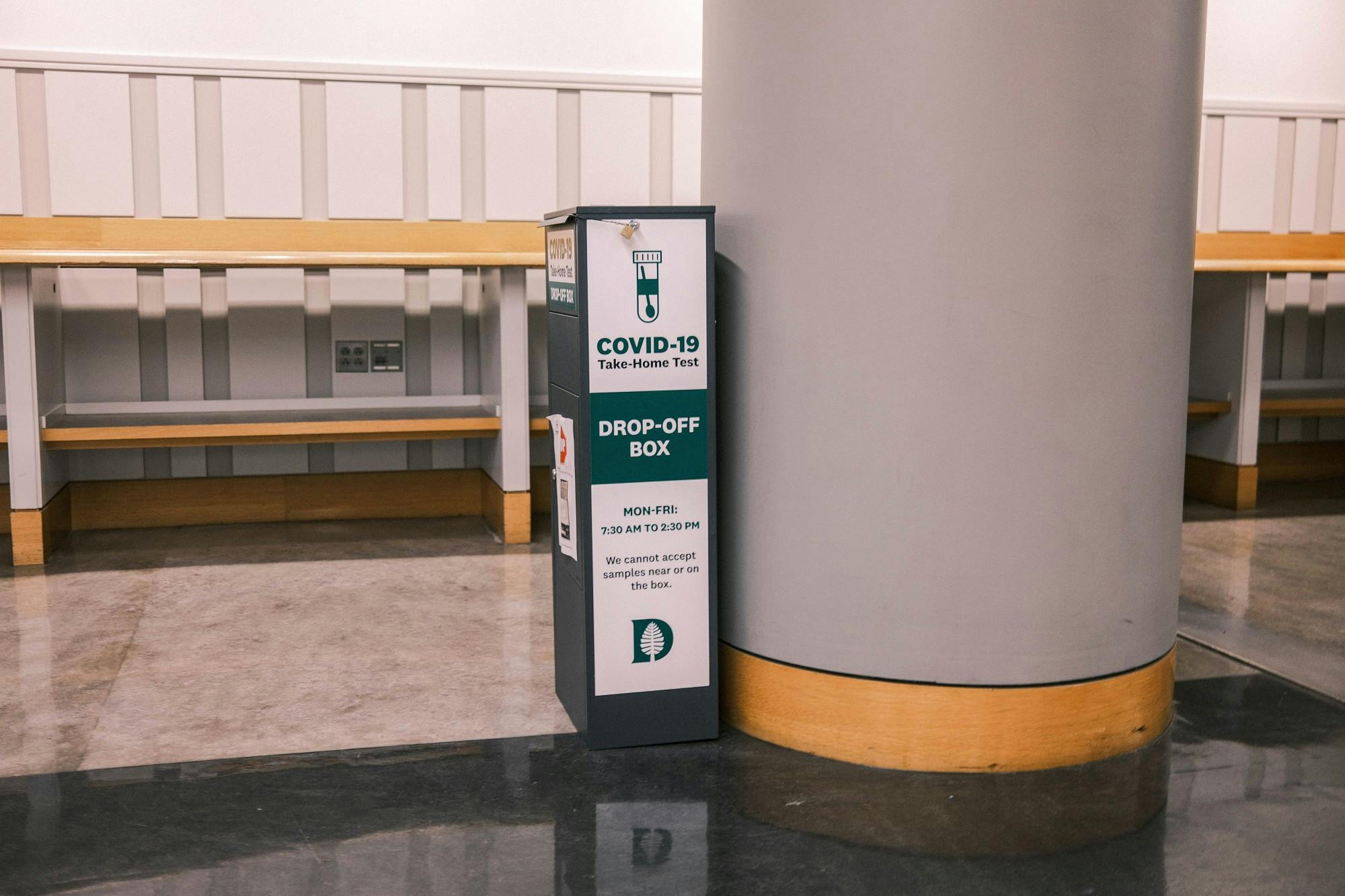In early September, the College announced that it would introduce take-home COVID-19 testing. While planning the roll out of the program has proven “challenging” and the tests are currently only available for select populations, according to College spokesperson Diana Lawrence, the tests will be offered to the remainder of the undergraduate student body as soon as logistics are finalized.
All student-athletes are currently eligible to participate in the program; faculty and staff who tested on campus before Sept. 25 as well as all graduate students will be eligible by the end of the week, according to Lawrence. Participants can pick up and drop off their testing kits at various locations around campus. Certain locations — including the Class of 1953 Commons, Byrne Hall, the MacLean Engineering Sciences Center, McKenzie Work Control and 4 Currier Place — are designated for both pick-up and drop-off of the testing kits. Other locations — Baker-Berry Library, the Burke Laboratory, the Hopkins Center for the Arts and Alumni Gymnasium — are only available for drop off.
Alumni Gym remains open as an in-person testing center, which will continue to be an option even when the at-home testing is fully implemented, according to Lawrence.
The take-home test kits include the same cotton swab tests as those used in-person. After administering the self-test, the kit must be delivered to the dropbox within 12 hours. According to Lawrence, the turnaround time for results are the same whether the test is taken in person or at home. She added that Axiom Medical, the health services organization that partners with the College for its testing program, is responsible for collecting the testing kits and ships tests to the laboratory twice a day.
According to Lawrence, a pilot phase of the take-home testing program was introduced in late August so the College could gather feedback before expanding the program to the broader Dartmouth community.
Andrew Ellis ’25, a member of the varsity men’s soccer team, has been using take-home tests for two weeks. He said that per the National Collegiate Athletic Association guidance and College rules, he tests twice a week during competition season. He noted that he would normally bring the take-home test kits in his locker room home the night before and drop it off in the West Gym by 11 a.m. the next morning. Upon arriving on campus, Ellis said, he received around 100 personalized labels to place on his testing kits.
Ellis said he finds that the take-home program is more convenient when compared to on-site testing.
“For me personally, it’s much easier,” he said. “I like that it allows you to test on your own time — Now it just becomes a part of your routine; it’s not a big deal anymore.”
Lawrence wrote that there were a “variety of factors” that determined which groups received priority, including “space availability, nature of the work, and the ease with which we could deploy the program logistically.” She added that the College will introduce the program to the remaining undergraduate student body “as soon as [the College] can finalize logistics.”
“The logistics are more complicated than they may appear on the surface, so the team wanted to take the time needed to evaluate the best path forward to make it as successful as possible,” Lawrence wrote.
Lawrence wrote the College hopes the program will offer community members “autonomy, flexibility, and convenience” once it is fully rolled out.
“This new process allows the community to do the testing on their own schedule … it reduces the time our community spends on testing/standing in lines … [and] it creates convenience for everyone, with a hopefully minimal walk to the nearest drop box,” Lawrence wrote.
News of the program has been well received among many anticipatory undergraduate students. Ryan Heaton ’25, who is not yet eligible for the at-home testing program, said that the process of testing on-site at the gym is “quite inconvenient,” as he lives in the Choates residence hall cluster.
“I have to go very far out of my way to get there,” Heaton said. “And when I do get there, I have to wait upwards of ten minutes to get tested.”
Heaton said he thinks the take-home testing program would encourage more people to participate in weekly testing and is a “great idea.”
Satchel Williams ’24 said he thinks the process of testing this fall has been much easier than his experience on campus last year. He noted that when he was on campus his freshman year testing was required twice weekly and students “had no other choice” than to wait in long lines that could often exceed 100 students.
Williams said although he thinks the testing program this year is “a lot better,” there are still some accessibility issues for people living far from Alumni Gym — especially as winter approaches. However, he noted that the problem could be solved by having two testing sites on campus instead of just one.
“It’s a pretty long hike to go all the way to get tested,” Williams said. “The only time I have time to get tested is if I have a class over there — [near Alumni Gym].”
Williams said he is excited for the opportunity to test off-site.
“Especially with [the] ease and accessibility, it’s a pretty good idea,” he said.
Former COVID-19 Task Force co-chairs Lisa Adams did not respond to requests for comments. Executive vice president Rick Mills and interim Provost David Kotz directed requests for comment to Lawrence.




